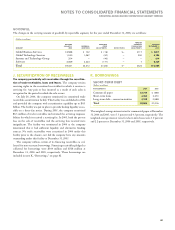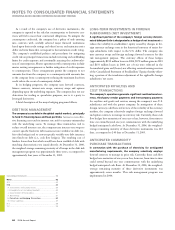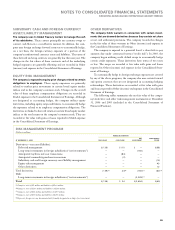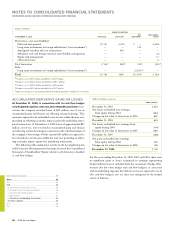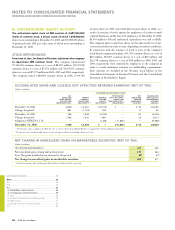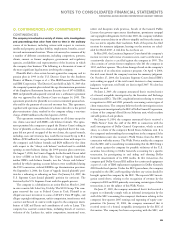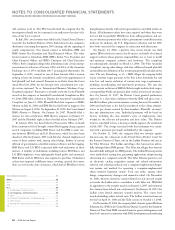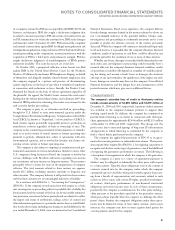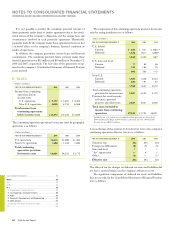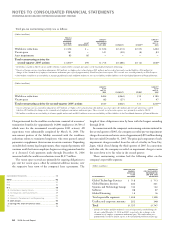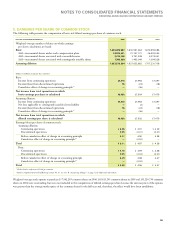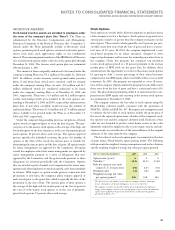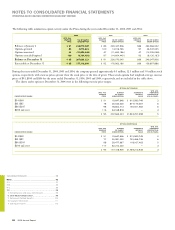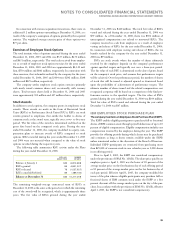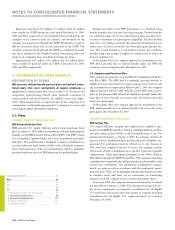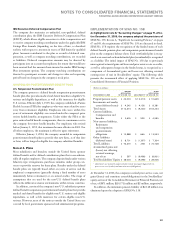IBM 2006 Annual Report Download - page 93
Download and view the complete annual report
Please find page 93 of the 2006 IBM annual report below. You can navigate through the pages in the report by either clicking on the pages listed below, or by using the keyword search tool below to find specific information within the annual report.Black
MAC
CG10
of a computer system that PSI says is compatible with IBM’s S/390 and
System z architectures. IBM also sought a declaratory judgment that
its refusal to license its patents to PSI and certain of its software for use
on PSI systems does not violate the antitrust laws. IBM seeks damages
and injunctive relief. On January 19, 2007, PSI answered the complaint
and asserted counterclaims against IBM for alleged monopolization and
attempted monopolization, tying, violations of New York and California
statutes proscribing unfair competition, tortious interference with the
acquisition of PSI by a third party and promissory estoppel. PSI also
sought declaratory judgments of noninfringement of IBM’s patents
and patent invalidity. The court has not yet set a trial date.
In October 2003, a purported collective action lawsuit was filed
against IBM in the United States District Court for the Northern
District of California by ten former IBM employees alleging, on behalf
of themselves and allegedly similarly situated former employees, that
the company engaged in a pattern and practice of discriminating
against employees on the basis of age when it terminated employees
in connection with reductions in force. Initially, the District Court
dismissed the lawsuit on the basis of release agreements signed by all
the plaintiffs. On appeal, the Ninth Circuit reversed the trial court’s
finding that the release barred these claims, and in January 2007 after
denial of IBM’s petition for rehearing, the matter was returned to the
trial court for further proceedings.
The company is party to, or otherwise involved in, proceedings
brought by U.S. federal or state environmental agencies under the
Comprehensive Environmental Response, Compensation and Liability
Act (CERCLA), known as “Superfund,” or laws similar to CERCLA.
Such statutes require potentially responsible parties to participate in
remediation activities regardless of fault or ownership of sites. The
company is also conducting environmental investigations or remedia-
tions at or in the vicinity of several current or former operating sites
pursuant to permits, administrative orders or agreements with state
environmental agencies, and is involved in lawsuits and claims con-
cerning certain current or former operating sites.
The company is also subject to ongoing tax examinations and gov-
ernmental assessments in various jurisdictions. Similar to many other
U.S. companies doing business in Brazil, the company is involved in
various challenges with Brazilian authorities regarding non-income
tax assessments and non-income tax litigation matters. These matters
principally relate to claims for taxes on the importation of computer
software. The total amounts related to these matters are approxi-
mately $1.5 billion, including amounts currently in litigation and
other amounts. The company believes it will prevail on these matters
and that these amounts are not meaningful indicators of liability.
In accordance with SFAS No. 5, “Accounting for Contingencies,”
(SFAS No. 5), the company records a provision with respect to a claim,
suit, investigation or proceeding when it is probable that a liability has
been incurred and the amount of the loss can be reasonably estimated.
Any provisions are reviewed at least quarterly and are adjusted to reflect
the impact and status of settlements, rulings, advice of counsel and
other information pertinent to a particular matter. Any recorded liabil-
ities for the above items, including any changes to such liabilities for the
year ended December 31, 2006, were not material to the Consolidated
Financial Statements. Based on its experience, the company believes
that the damage amounts claimed in the matters referred to above are
not a meaningful indicator of the potential liability. Claims, suits,
investigations and proceedings are inherently uncertain and it is not
possible to predict the ultimate outcome of the matters previously
discussed. While the company will continue to defend itself vigorously
in all such matters, it is possible that the company’s business, financial
condition, results of operations or cash flows could be affected in any
particular period by the resolution of one or more of these matters.
Whether any losses, damages or remedies finally determined in any
such claim, suit, investigation or proceeding could reasonably have a
material effect on the company’s business, financial condition, results
of operations or cash flow will depend on a number of variables, includ-
ing the timing and amount of such losses or damages; the structure
and type of any such remedies; the significance of the impact any such
losses, damages or remedies may have on the company’s Consolidated
Financial Statements; and the unique facts and circumstances of the
particular matter which may give rise to additional factors.
COMMITMENTS
The company’s extended lines of credit to third-party entities
include unused amounts of $2,895 million and $3,019 million at
December 31, 2006 and 2005, respectively. A portion of these amounts
was available to the company’s business partners to support their
working capital needs. In addition, the company has committed to
provide future financing to its clients in connection with client pur-
chase agreements for approximately $2,496 million and $2,155 million
at December 31, 2006 and 2005, respectively. The change over the
prior year is due to increased signings of long-term IT infrastructure
arrangements in which financing is committed by the company to
fund a client’s future purchases from the company.
The company has applied the provisions of FIN 45 to its agree-
ments that contain guarantee or indemnification clauses. These provi-
sions expand those required by SFAS No. 5, by requiring a guarantor to
recognize and disclose certain types of guarantees, even if the likelihood
of requiring the guarantor’s performance is remote. The following is
a description of arrangements in which the company is the guarantor.
The company is a party to a variety of agreements pursuant to
which it may be obligated to indemnify the other party with respect
to certain matters. Typically, these obligations arise in the context of
contracts entered into by the company, under which the company
customarily agrees to hold the other party harmless against losses aris-
ing from a breach of representations and covenants related to such
matters as title to assets sold, certain IP rights, specified environmen-
tal matters, third-party performance of non-financial contractual
obligations and certain income taxes. In each of these circumstances,
payment by the company is conditioned on the other party making a
claim pursuant to the procedures specified in the particular contract,
which procedures typically allow the company to challenge the other
party’s claims. Further, the company’s obligations under these agree-
ments may be limited in terms of time and/or amount, and in some
instances, the company may have recourse against third parties for
certain payments made by the company.
NOTES TO CONSOLIDATED FINANCIAL STATEMENTS
INTERNATIONAL BUSINESS MACHINES CORPORATION AND SUBSIDIARY COMPANIES
91


